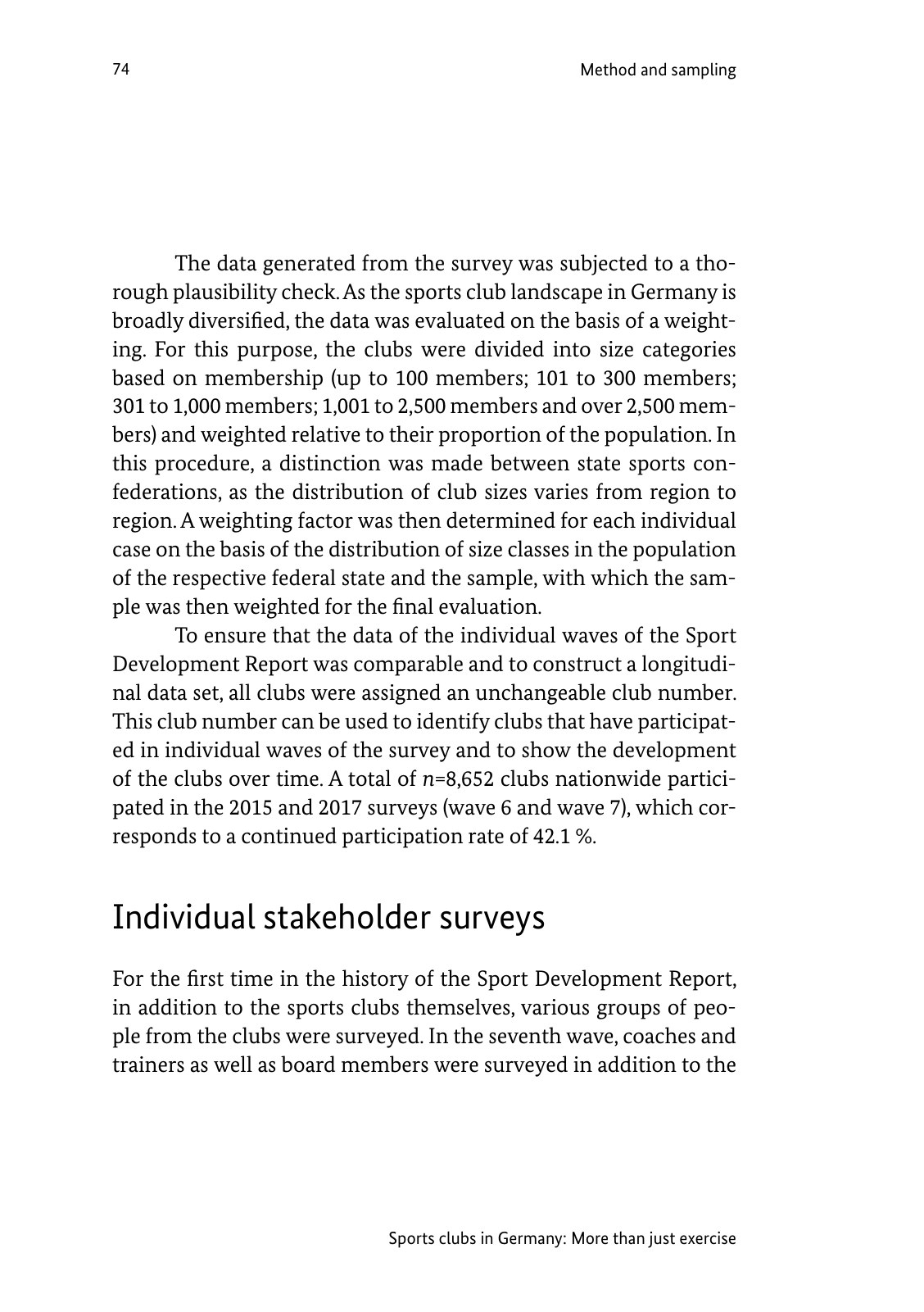74 Method and sampling Sports clubs in Germany More than just exercise The data generated from the survey was subjected to a tho rough plausibility check As the sports club landscape in Germany is broadly diversified the data was evaluated on the basis of a weight ing For this purpose the clubs were divided into size categories based on membership up to 100 members 101 to 300 members 301 to 1 000 members 1 001 to 2 500 members and over 2 500 mem bers and weighted relative to their proportion of the population In this procedure a distinction was made between state sports con federations as the distribution of club sizes varies from region to region A weighting factor was then determined for each individual case on the basis of the distribution of size classes in the population of the respective federal state and the sample with which the sam ple was then weighted for the final evaluation To ensure that the data of the individual waves of the Sport Development Report was comparable and to construct a longitudi nal data set all clubs were assigned an unchangeable club number This club number can be used to identify clubs that have participat ed in individual waves of the survey and to show the development of the clubs over time A total of n 8 652 clubs nationwide partici pated in the 2015 and 2017 surveys wave 6 and wave 7 which cor responds to a continued participation rate of 42 1 Individual stakeholder surveys For the first time in the history of the Sport Development Report in addition to the sports clubs themselves various groups of peo ple from the clubs were surveyed In the seventh wave coaches and trainers as well as board members were surveyed in addition to the

Hinweis: Dies ist eine maschinenlesbare No-Flash Ansicht.
Klicken Sie hier um zur Online-Version zu gelangen.
Klicken Sie hier um zur Online-Version zu gelangen.